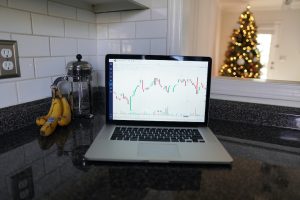Liquidity is a term that is often used in the world of forex trading, but what exactly does it mean? In simple terms, liquidity refers to the ability to buy or sell an asset quickly and at a fair price without affecting the market’s overall price. In forex trading, liquidity is critical because it impacts the speed and ease of executing trades, which can directly impact profitability.
Forex liquidity can be affected by a variety of factors, including economic data releases, political events, market sentiment, and even natural disasters. When there is a lot of liquidity in the market, it means that there are many buyers and sellers, and investors can quickly and easily execute their trades. Conversely, when liquidity is low, it can be challenging to find buyers or sellers, and trades may take longer to execute, leading to potential price slippage and increased trading costs.
One of the primary ways that forex traders measure liquidity is by looking at the bid-ask spread. The bid-ask spread is the difference between the highest price a buyer is willing to pay for an asset (the bid price) and the lowest price a seller is willing to accept (the ask price). When the spread is narrow, it indicates that there is a lot of liquidity in the market, and trades can be executed quickly and at a fair price. Conversely, when the spread is wide, it may be more challenging to execute trades quickly and at a fair price.
Another way that forex traders measure liquidity is by looking at trading volume. Trading volume refers to the number of shares or contracts that are traded in a specific period. When trading volume is high, it indicates that there are many buyers and sellers in the market, and trades can be executed quickly and at a fair price. Conversely, when trading volume is low, it may be more challenging to find buyers or sellers, and trades may take longer to execute.
The forex market is considered one of the most liquid financial markets globally, with an average daily trading volume of over $5 trillion. The high liquidity of the forex market is due to several factors, including the large number of market participants, the 24-hour trading cycle, and the ease of executing trades electronically.
However, it’s essential to note that liquidity can vary depending on the currency pair being traded. Major currency pairs, such as EUR/USD, USD/JPY, and GBP/USD, tend to have high liquidity as they are the most actively traded pairs. In contrast, exotic currency pairs, such as the USD/HKD or USD/ZAR, may have lower liquidity due to their lower trading volumes and fewer market participants.
Liquidity is essential for forex traders as it impacts the speed and ease of executing trades, which can directly impact profitability. High liquidity means that traders can execute trades quickly and at a fair price, while low liquidity can lead to potential price slippage and increased trading costs. Therefore, it’s crucial for traders to consider liquidity when selecting currency pairs to trade and to monitor market conditions closely to ensure that they can execute trades quickly and at a fair price.
In conclusion, liquidity is a critical concept in forex trading, and it refers to the ability to buy or sell an asset quickly and at a fair price without affecting the market’s overall price. Liquidity can be affected by a variety of factors, including economic data releases, political events, and market sentiment. Forex traders measure liquidity by looking at the bid-ask spread and trading volume, and it’s essential to consider liquidity when selecting currency pairs to trade and to monitor market conditions closely. With a solid understanding of liquidity, forex traders can make informed trading decisions and maximize their profitability.






